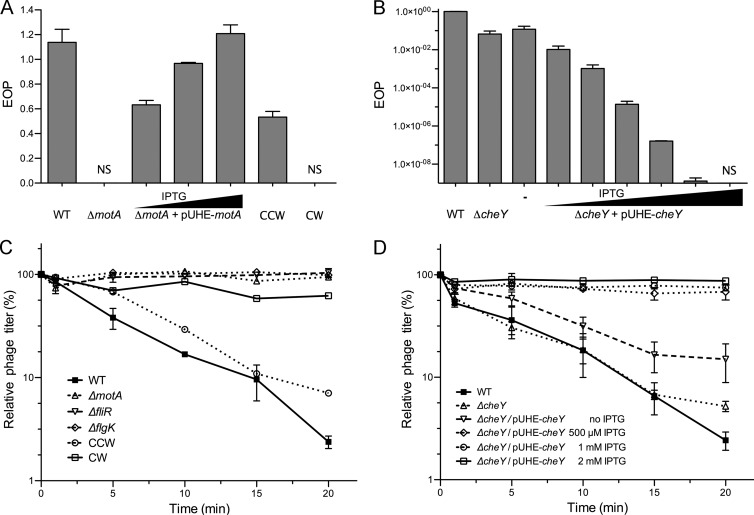Fig 4.
iEPS5 requires CCW-rotating flagella for adsorption to and final infection of the host bacteria. The plaque-forming ability (A and B) and adsorption (C and D) of iEPS5 against each strain was measured. For panels A and B, the wild type (WT; SL1344), its isogenic mutants, and two reported chemotaxis mutant strains (SJW3076 [CCW-biased mutant] and SJW2811 [CW-biased mutant]) were grown exponentially and plated on the top agar and infected with serially diluted iEPS5. The concentrations of IPTG are 100, 200, and 500 μM for motA complementation and 100, 200, 500, 1,000, 1,500, and 2,000 μM for cheY complementation, respectively. For panels C and D, exponentially growing cells were infected with iEPS5 (MOI, 0.01) and incubated at 37°C. After centrifugation and filtration, the phage titer in the filtrate was determined by standard overlay assay. The results are expressed as means and standard deviations from triplicate assays. The concentrations of IPTG are 100, 200, 500, 1,000, 1,500, and 2,000 μM, respectively. NS, nonsensitive.

